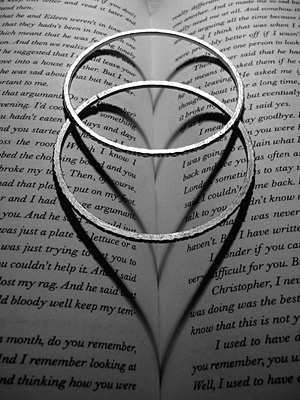All Nonfiction
- Bullying
- Books
- Academic
- Author Interviews
- Celebrity interviews
- College Articles
- College Essays
- Educator of the Year
- Heroes
- Interviews
- Memoir
- Personal Experience
- Sports
- Travel & Culture
All Opinions
- Bullying
- Current Events / Politics
- Discrimination
- Drugs / Alcohol / Smoking
- Entertainment / Celebrities
- Environment
- Love / Relationships
- Movies / Music / TV
- Pop Culture / Trends
- School / College
- Social Issues / Civics
- Spirituality / Religion
- Sports / Hobbies
All Hot Topics
- Bullying
- Community Service
- Environment
- Health
- Letters to the Editor
- Pride & Prejudice
- What Matters
- Back
Summer Guide
- Program Links
- Program Reviews
- Back
College Guide
- College Links
- College Reviews
- College Essays
- College Articles
- Back
Jane Eyre: Another Cinderella Story?
Once upon a time, in a faraway land, there lived a young orphan girl named Jane. Jane lived with her wealthy but horribly evil stepmother and stepsiblings, who treated her as their servant. Jane wished for nothing more than to leave these terrible people, and she waited and prayed for that glorious day to come. After ten miserable years, it finally did. When she arrived at her new castle, she discovered that the owner was none other than Prince Charming, better known as the affluent Mr. Rochester. The two fell instantly in love, were married, and lived happily ever after.
For centuries, children all over the world have listened intently to variations of this famous fairy tale. The Cinderella story has been adapted and reformed over and over again to fit a diverse range of audiences. This version comes to us in the form of Charlotte Brontë’s classic, Jane Eyre. Although Jane’s tale is a bit more intricate and emotional than the average fairy tale, the similarities between them are distinct. Through the use of characters, plot, and fairy-tale elements in Jane Eyre, Charlotte Brontë succeeds in writing an evocative depiction of the classic Cinderella story.
From the very beginning of Jane Eyre, Jane may be viewed in the same light as a Cinderella character. Jane is simply the abused orphan child, acting as a servant to her aunt and cousins with whom she has been living. Because of her unfortunate situation, Jane grows up with a sense of independence and a practical understanding of the ways of the world, unlike most women of her time period. Thus, Jane tends to attract men who are searching for someone different from the average, naïve women of this era. One such man, St. John, admires her greatly and lists her many positive attributes: “Jane, you are docile, diligent disinterested, faithful, constant, and courageous; very gentle and very heroic: cease to mistrust yourself—I can trust you unreservedly” (Brontë, 607). These valuable personality traits make her alluring to none other than the Prince Charming of the story, Mr. Rochester.
Like all Prince Charmings, Edward Rochester is wealthy—the owner of Thornfield Estate and benefactor to young Adelé, Jane’s lively pupil. Thus, Mr. Rochester initially fits the classic “prince” criterion. Once the reader is able to see beyond his riches, the essence of Mr. Rochester’s character is revealed. Similar to a typical make-believe prince, Mr. Rochester has been searching the lands far and wide for his perfect princess-to-be: “I sought my ideal of a woman amongst English ladies, French countesses, Italian signoras, and German gräfinnen. I could not find her” (Brontë, 466). After years of despair and loneliness, this Prince Charming finally finds his match—in the form of the intelligent Jane Eyre. However, it is not just the characters that make these two stories alike.
After Brontë’s characters have been established, it becomes evident that the plot of Jane Eyre is similar to Cinderella’s. Just as in its fairy-tale counterpart, Jane Eyre opens with an introduction to Jane’s life as an attendant to her aunt and cousins--enter the evil step mother and selfish step siblings. She lives in the midst of this abysmal situation for years, until she finally escapes and finds her way to Thornfield (castle), home of Mr. Rochester (Prince Charming). Of course, in the fairy tale world, the prince and princess are always seemingly born to love each other, as Jane states: “He made me love him without looking at me” (Brontë, 259). All is right in the world, and the two are as happy as Cinderella and Charming at a ball.
Unfortunately, every ball must end sometime, and Jane finds herself in the heart-wrenching position of leaving Mr. Rochester. And what does every good prince do when he discovers his true love is no longer present? Why, he searches the entire kingdom, of course! But, alas, “every research after her course had been vain: the country had been scoured far and wide; no vestige of information could be gathered respecting her. Yet that she should be found is become a matter of serious urgency: advertisements have been put in all the papers” (Brontë, 571). Finally, Jane returns to her beloved prince, and, as Jane joyously relates: “Reader, I married him” (Brontë, 676). Thus, the prince and his fair maiden achieve their happy ending. But upon further examination of this amorous tale, even more chimerical similarities may be seen.
These similarities are in the form of clichés and fairy tale elements—a common occurrence in Jane Eyre. One such fairy tale element is the repeated use of the classic “stroke of midnight” to indicate Jane’s major life changes. An illustrative example of this is seen the night on which Jane arrives at Thornfield. Just moments after stepping through the front door, Mrs. Fairfax—the maid—tells Jane to go to bed, for it is “on the stroke of twelve.” This theme continues when Mr. Rochester proposes to Jane; the couple returns home “at twelve o’clock” that night. A final example may be seen on the eve of their intended wedding, when Jane leaves Mr. Rochester to go to sleep shortly after “it struck twelve.” Similarly, Mr. Rochester brings his own cliché into the mix. When he first meets Jane, he arrives on horseback. Jane is walking down a dirt road when she spies a dog, and “the horse followed—a tall steed, and on its back, a rider” (Brontë, 165). This gallant rider happens to be her employer, and later, her prince.
Thus, the two sweethearts receive the long-awaited happy ever after: “My Edward and I, then, are happy: and the more so, because those we most love are happy likewise” (Brontë, 680). Although the story has a bit more to it than Cinderella’s, it is clear that the two are much alike. From her characters’ personality traits to a fanciful plotline and plays on classic clichés, Charlotte Brontë has supplied us with a more complex and profound version of the ancient Cinderella story.

Similar Articles
JOIN THE DISCUSSION
This article has 8 comments.
If a college asks you for a redundant, pre-written essay about two pointless authors of the same childrens book, then by all right, copy an essay that you have used twice before and see how far originality gets you.
But honestly, your better off with actually answering a question that college admissions asks you.
